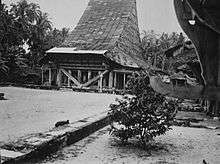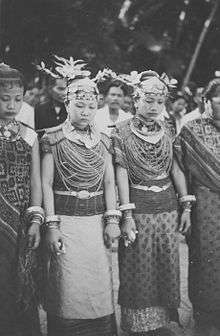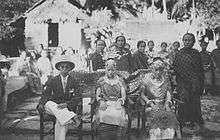Batu Islands




The Batu Islands are an archipelago of Indonesia located in the Indian Ocean, off the west coast of Sumatra, between Nias and Siberut. The three primary islands, of approximately equal size, are Pini, Tanahmasa, and Tanahbala. There are forty-eight smaller islands, of which the largest are Sipika, Simuk, Bodjo, Telo and Sigata; less than half are inhabited. The total land area of the seven administrative districts is 1,206.6 km2. The islands are governed as a part of South Nias regency within North Sumatra province. In Indonesian and Malay, batu means rock or stone.
The equator passes through the archipelago, north of Tanahmasa and south of Pini. Administratively, Pini (with offshore islets) forms the Pulau-pulau Batu Timur (East Batu Islands) District of South Nias Regency. The rest of the archipelago at the 2010 Census comprised the Pulau-pulau Batu (Batu Islands) and Hibala Districts of the same regency. However, both have been subsequently divided to form new Districts - Tana Masa District has been formed from part of Hibala District, and three new districts have been formed from parts of Pulau-pulau Batu District - namely Pulau-pulau Batu Barat (West Batu Islands), Pulau-pulau Batu Utara (North Batu Islands) and Simuk Districts. The original districts remain with reduced areas and population, and thus the islands now form seven separate districts.
People
The people of the Batu Islands have had substantial interaction with the populations of Nias, to the north, whose language they share. The islands have occasionally been a destination for slaves who escaped from Nias, and in the past decade have become a destination for surfing boat charters from Padang, on the Sumatran mainland. The population at the 2010 Census was 28,468.[1]
The islands were visited by Simon Reeve during Equator, a 2006 BBC TV Series.
Wildlife
A population of the Sunda clouded leopard had been recorded here.[2]
See also
References
- ↑ Biro Pusat Statistik, Jakarta, 2011.
- ↑ Wilting A.; Christiansen P.; Kitchener A. C.; Kemp Y. J. M.; Ambu L.; Fickel, J. (2010). "Geographical variation in and evolutionary history of the Sunda clouded leopard (Neofelis diardi) (Mammalia: Carnivora: Felidae) with the description of a new subspecies from Borneo" (PDF). Molecular Phylogenetics and Evolution. 58 (2): 317–28. doi:10.1016/j.ympev.2010.11.007. PMID 21074625.